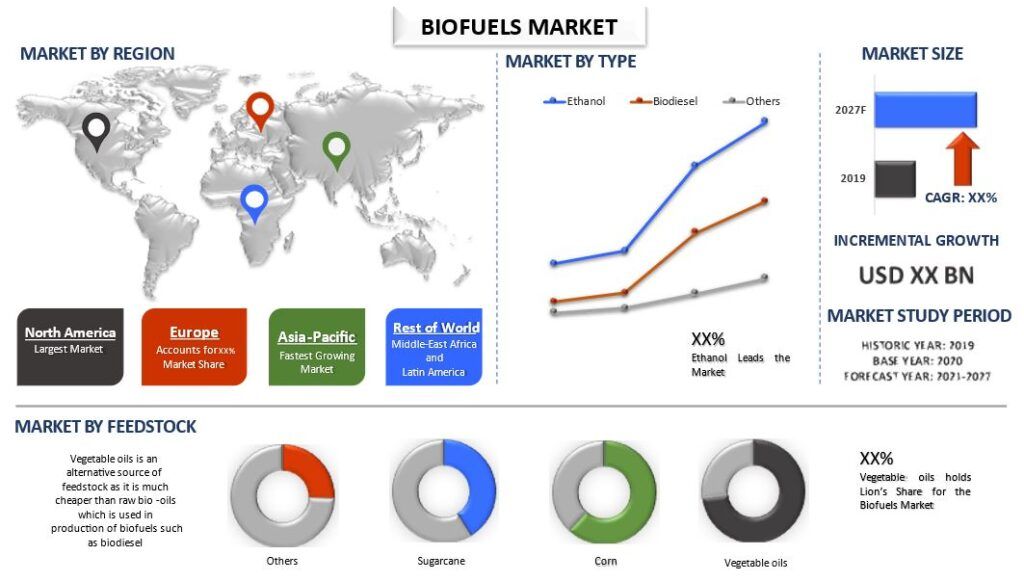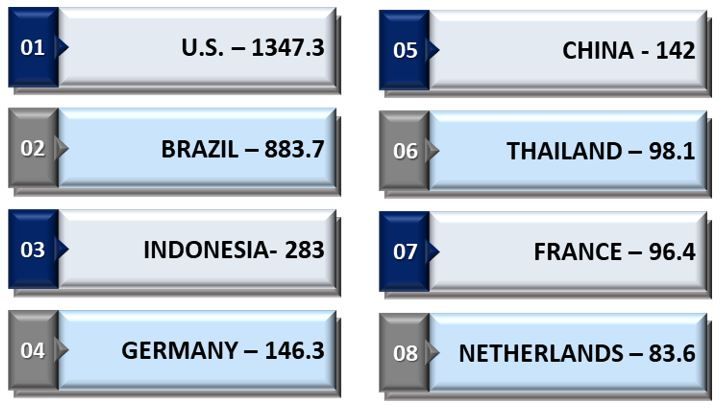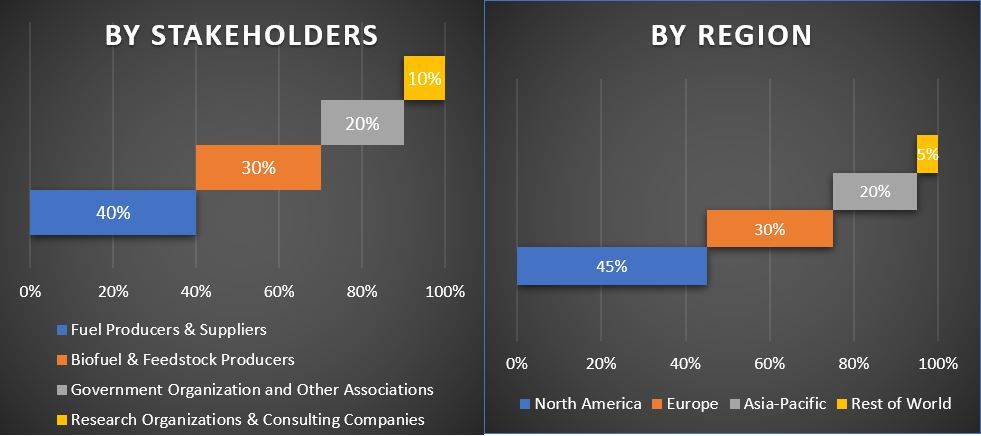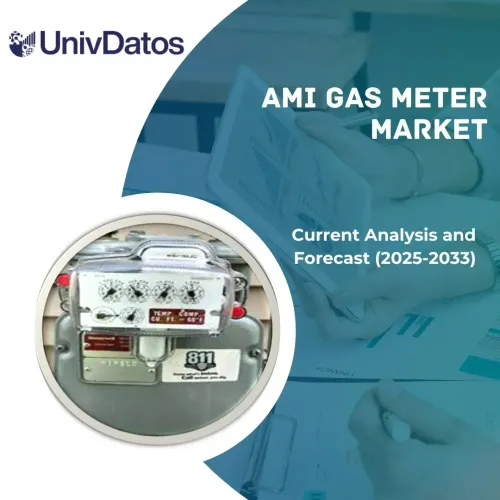- Home
- About Us
- Industry
- Services
- Reading
- Contact Us
Biofuels Market: Current Analysis and Forecast (2021-2027)
Emphasis on Type (Biodiesel, Ethanol, Others); Feedstock (Corn, Sugarcane, Vegetable Oils, Others); Region and Country

Biofuels Market was valued at US$ 140 billion in 2020 and is expected to grow at a CAGR of 7% over the forecast period (2021-2027). Biofuels are the fuels that are produced directly or indirectly from organic material i.e., biomass including plant or animal waste. These are stated as renewable fuels because the feedstock material utilized for their production can be replenished at a faster rate as compared to conventional fossil fuels. Biofuels are considered as a leading potential solution for mitigating energy and environmental security issues associated with petroleum & petroleum products dependency.
World’s air quality is degrading rapidly as the air pollution levels are on the rise across the globe which may pose major health risks to the global population. For instance, as per, the World Health Organization, nearly 7 million deaths are attributed to air pollution every year. Also, 9 out of 10 people breathe air that exceeds WHO guideline limits containing high levels of pollutants, with low- and middle-income countries suffering from the highest exposures. To tackle the degrading environmental changes and their negative impacts, world leaders were legally bound to the Paris agreement in 2015. this agreement was joined by 191 parties and includes commitments from all countries to reduce their emissions and work together to adapt to the impacts of climate change. Owing to these concerns regarding the deteriorating environment and various government regulations for adopting cleaner energy fuel the biofuels market is expected to witness growth in upcoming years.
Another significant reason responsible for the growth of the biofuel market is growing energy needs, mandates for biofuel blending in automotive fuels and increasing government regulation for a cleaner and sustainable fuel. For instance, as per the Tracking Transport report by IEA, in 2019, the biofuel production for transport has expanded more than 6% year-on-year and is projected to grow 3% annually over the course of the next year five years. Further, in OECD, it has also been anticipated that the share of biofuels in road transport will increase 20% by 2040.
Leading Countries in Biofuel Production Worldwide (PJ), 2020

Renewable Energy Group, Inc, Archer Daniels Midland Company, POET, LLC, Abengoa Bioenergy S.A., Cargill, Pacific Ethanol Inc., Valero Energy Corp., Royal Dutch Shell, Butamax, Wilmar International are some of the prominent players operating in the biofuels market. Several M&As along with partnerships have been undertaken by these players to facilitate customers with new and innovative products.
Insights Presented in the Report
“Amongst Type, ethanol segment holds the major share”
Amongst type, the global biofuels market is segmented into biodiesel, ethanol, and others. The ethanol segment of the global biofuels market was valued at USD XX billion in 2020 and is likely to reach US$ XX billion by 2027 growing at a CAGR of XX% from 2021-2027 owing to the increasing transport fuel demand & supportive government policies for clean energy fuel. Consequently, there is improved production of ethanol globally. For instance, over the years vendors in China heightened the national production of ethanol by the capacity of 258 million liters to 5,258 million liters and aim to roll out the blend of 10% ethanol in gasoline from 11 to 15 provinces.
“Amongst Feedstock, vegetable oils segment holds the major share”
Based on feedstock, the global biofuels market is segmented into corn, sugarcane, vegetable oils, and others. Amongst feedstock, the vegetable oils segment accounted for a market valuation of US$ XX billion in 2020 and is expected to reach US$ XX billion by the year 2027, at a CAGR of XX% over the analyzed period. The growth of this segment is attributed to the growing use of vegetable oils as a source of diesel fuel and the process used to convert vegetable oils to biodiesel is called transesterification. This feedstock category is an alternative source of bio-vegetable oils as it is much cheaper than raw bio-oils which are used in the production of biofuels such as biodiesel.
“North America represents one of the largest markets of biofuels market”
For a better understanding of the market dynamics of the biofuels market, a detailed analysis was conducted for different regions across the globe including North America (the U.S, Canada, and the Rest of North America), Europe (Germany, France, Spain, United Kingdom, Italy, and Rest of Europe), Asia-Pacific (China, Japan, India, Australia, and Rest of APAC), Rest of World has been conducted. North America dominated the market and generated revenue of US$ XX million in 2020 owing to the growing popularity of renewable energy and increasing biofuel production across the region. For instance, the production of biofuels amounted to be around 41.2 million metric tons of oil equivalent in 2020, up from 32.1 million metric tons of oil equivalent in 2015.
Reasons to buy this report:
- The study includes market sizing and forecasting analysis validated by authenticated key industry experts
- The report presents a quick review of overall industry performance at one glance
- The report covers an in-depth analysis of prominent industry peers with a primary focus on key business financials, product portfolio, expansion strategies, and recent developments
- Detailed examination of drivers, restraints, key trends, and opportunities prevailing in the industry
- The study comprehensively covers the market across different segments
- Deep dive regional level analysis of the industry
Customization Options:
The global biofuels market can further be customized as per the requirement or any other market segment. Besides this, UMI understands that you may have your own business needs, hence feel free to connect with us to get a report that completely suits your requirements.
Table of Content
Analyzing the historical market, estimation of the current market, and forecasting the future market of the Global Biofuels Market were the three major steps undertaken to create and analyze the adoption of Biofuels in major regions globally. Exhaustive secondary research was conducted to collect the historical market numbers and estimate the current market size. Secondly, to validate these insights, numerous findings and assumptions were taken into consideration. Moreover, exhaustive primary interviews were also conducted, with industry experts across the value chain of the Global Biofuels Market. Post assumption and validation of market numbers through primary interviews, we employed a top-down/bottom-up approach to forecasting the complete market size. Thereafter, market breakdown and data triangulation methods were adopted to estimate and analyze the market size of segments and sub-segments the industry pertains to. Detailed methodology is explained below:
Analysis of Historical Market Size
Step 1: In-Depth Study of Secondary Sources:
Detail secondary study was conducted to obtain the historical market size of the biofuels through company internal sources such as annual report & financial statements, performance presentations, press releases, etc., and external sources including journals, news & articles, government publications, competitor publications, sector reports, third-party database, and other credible publications.
Step 2: Market Segmentation:
After obtaining the historical market size of the biofuels market, we conducted a detailed secondary analysis to gather historical market insights and share for different segments & sub-segments for major regions. Major segments included in the report as type and feedstock. Further country-level analyses were conducted to evaluate the overall adoption of biofuels across the globe.
Step 3: Factor Analysis:
After acquiring the historical market size of different segments and sub-segments, we conducted a detailed factor analysis to estimate the current market size of biofuels. Further, we conducted factor analysis using dependent and independent variables such as growing demand for cleaner fuel and increasing concerns over degrading environment. A thorough analysis was conducted for demand and supply-side scenarios considering top partnerships, merger and acquisition, business expansion, and product launches in the biofuels sector across the globe.
Current Market Size Estimate & Forecast
Current Market Sizing: Based on actionable insights from the above 3 steps, we arrived at the current market size, key players in the biofuels market, and market shares of the segments. All the required percentage shares split, and market breakdowns were determined using the above-mentioned secondary approach and were verified through primary interviews.
Estimation & Forecasting: For market estimation and forecast, weights were assigned to different factors including drivers & trends, restraints, and opportunities available for the stakeholders. After analyzing these factors, relevant forecasting techniques i.e., top-down/bottom-up approach was applied to arrive at the market forecast about 2027 for different segments and subsegments across the major markets globally. The research methodology adopted to estimate the market size encompasses:
- The industry’s market size, in terms of value (US$) and the adoption rate of biofuels across the major markets domestically
- All percentage shares, splits, and breakdowns of market segments and sub-segments
- Key players in the biofuels market in terms of products offered. Also, the growth strategies adopted by these players to compete in the fast-growing market
Market Size and Share Validation
Primary Research: In-depth interviews were conducted with the Key Opinion Leaders (KOLs) including Top Level Executives (CXO/VPs, Sales Head, Marketing Head, Operational Head, and Regional Head, Country Head, etc.) across major regions. Primary research findings were then summarized, and statistical analysis was performed to prove the stated hypothesis. Inputs from primary research were consolidated with secondary findings, hence turning information into actionable insights.
Split of Primary Participants in Different Regions

Market Engineering
Data triangulation technique was employed to complete the overall market estimation and to arrive at precise statistical numbers of each segment and sub-segment of the biofuels market. Data was split into several segments & sub-segments post studying various parameters and trends in the areas of type and feedstock of the biofuels market.
The main objective of the Biofuels Market Study
The current & future market trends of biofuels were pinpointed in the study. Investors can gain strategic insights to base their discretion for investments from the qualitative and quantitative analysis performed in the study. Current and future market trends were determined the overall attractiveness of the market at a regional level, providing a platform for the industrial participant to exploit the untapped market to benefit as a first-mover advantage. Other quantitative goals of the studies include:
- Analyze the current and forecast market size of biofuels in terms of value (US$). Also, analyze the current and forecast market size of different segments and sub-segments
- Segments in the study include areas of types and feedstock
- Define and analysis of the regulatory framework for the biofuels industry
- Analyze the value chain involved with the presence of various intermediaries, along with analyzing customer and competitor behaviors of the industry
- Analyze the current and forecast market size of the biofuels market for the major region
- Major regions studied in the report include North America, Europe, Asia-Pacific, and Rest of the world
- Company profiles of the biofuels market and the growth strategies adopted by the market players to sustain in the fast-growing market
- Deep dive regional level analysis of the industry
Related Reports
Customers who bought this item also bought










